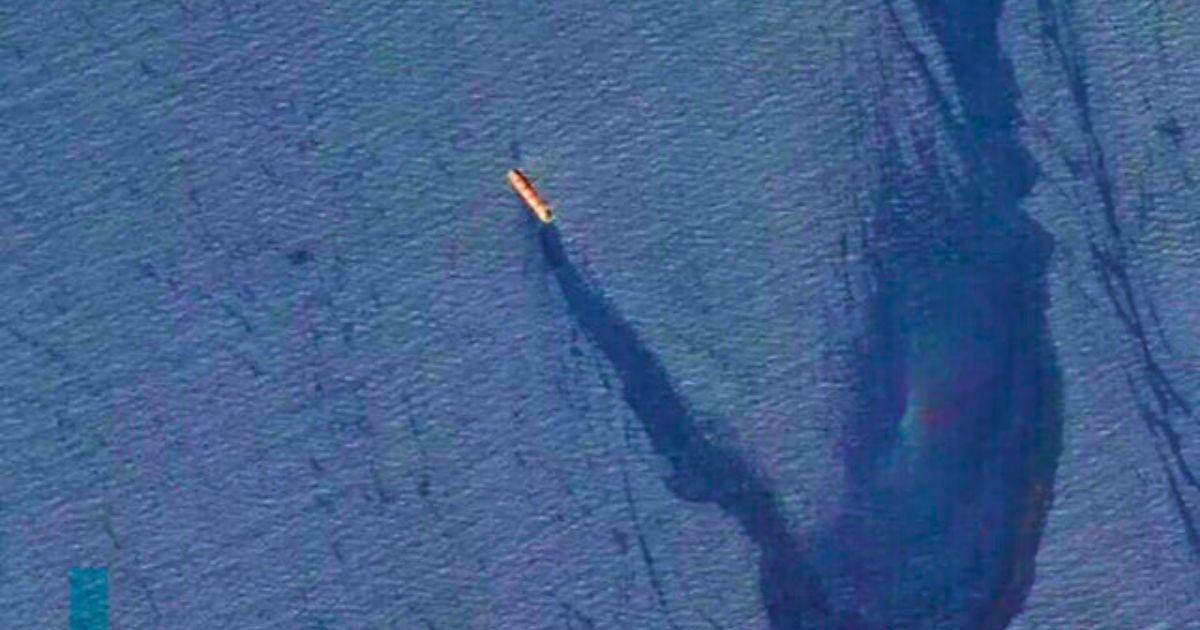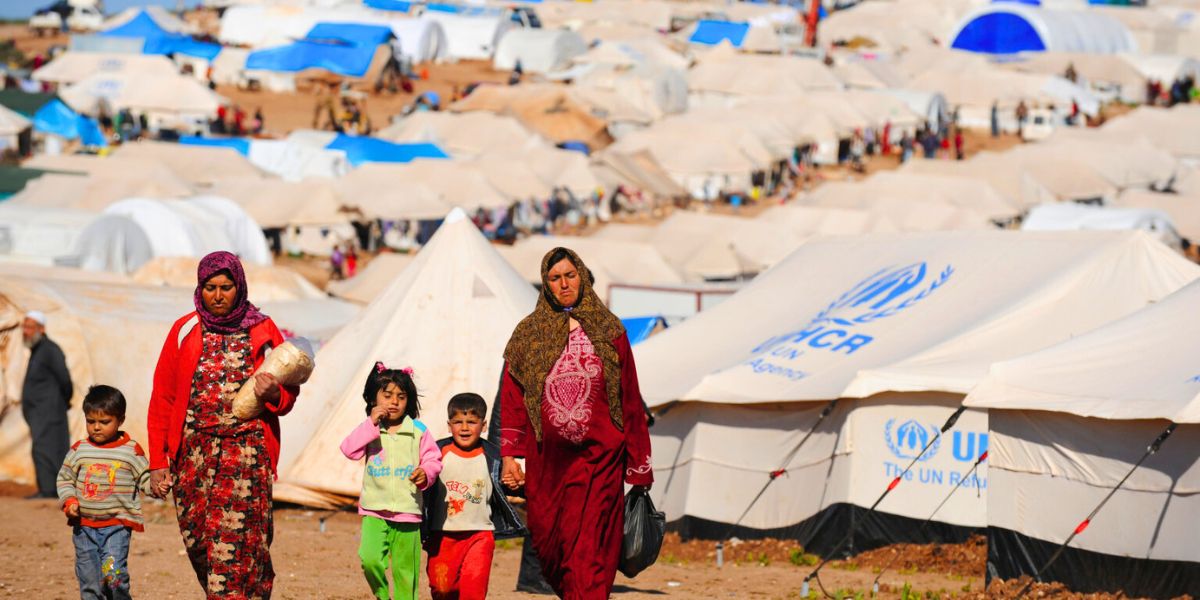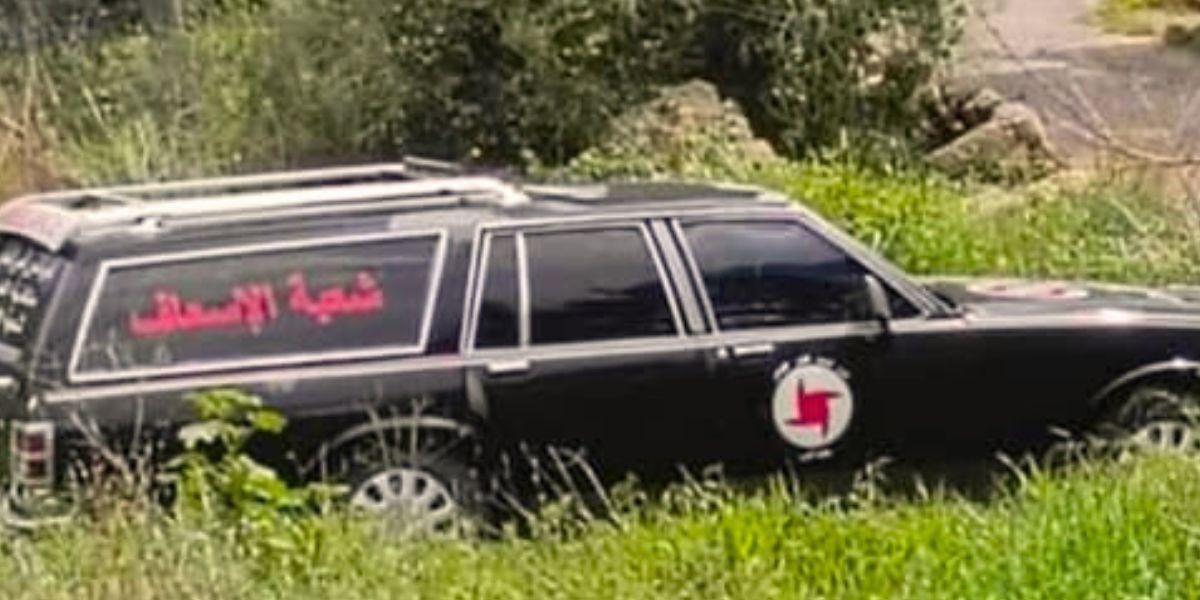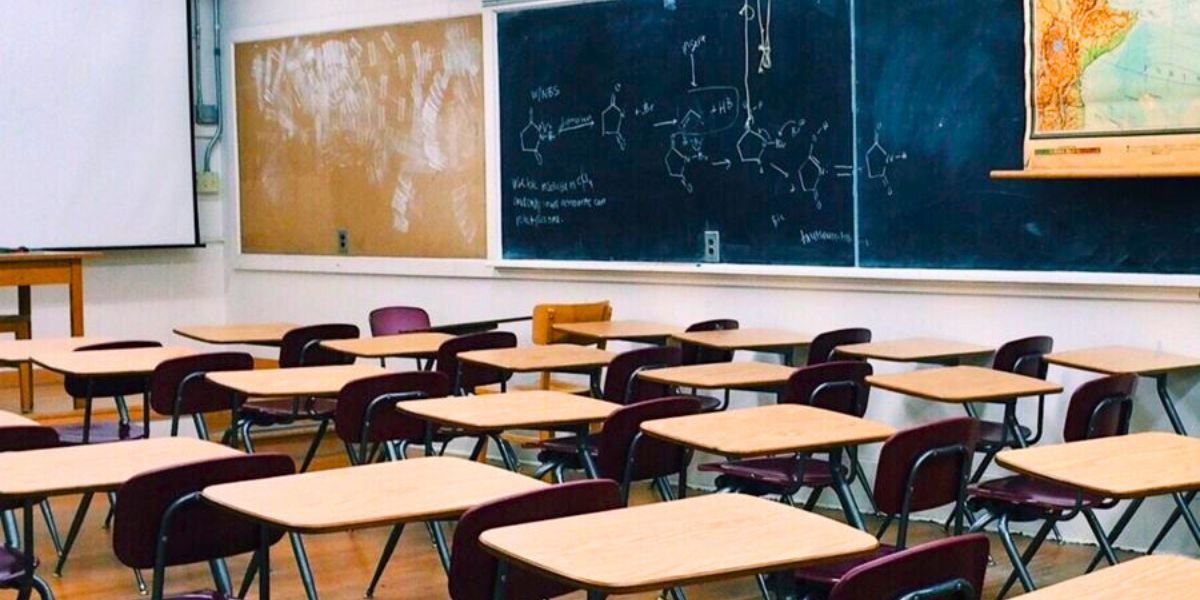Disponsible en Francais
متوفر باللغة العربية
On August 4th, 2020, an explosion at the Beirut Port ripped through the capital of Lebanon. The origin was a warehouse containing 2,700 tons of ammonium nitrate.
Many had tried warning officials, including the President and successive Prime Ministers, of the dire dangers of improperly storing these materials. But no action was taken.
The source of the materials is still convoluted. But the population blames the governments over the past years for negligence.
The Beirut Blast killed at least 235 people. However, the confirmed number differs based on who you ask. There’s no official singular count to date. There are still people unaccounted for and missing.
Another 7,000 people were injured and 77,000 homes were damaged, leaving 300,000 people displaced.
According to the World Bank, the Blast caused an estimate of $3.8 to $4.6 billion in material damage.
Immediately after the explosion, private and public fundraising campaigns from around the world popped up to help the victims. They aimed to go through trusted NGOs and organizations, bypassing the Lebanese government due to the general lack of trust and fear that the money would be pocketed.
In Canada, there were countless campaigns from individuals, private companies, and organizations, and then the government of Canada to raise money for the Beirut Port explosion victims.
One of these fundraisers was initiated by ourselves through our registered nonprofit in Canada, The961 Foundation. We raised 52,659 CAD for the Lebanese Red Cross.
Another initiative, Lebanon Strong, launched by Toronto-based Dina Bakhit, created a constant aid route of donated goods for Lebanon that is still running till today.
It initially collected all sorts of donations for the people impacted by the Beirut Blast and rescue workers, including clothing, medicine, and even firefighting equipment.
It has since evolved to donate much-needed baby formula and women’s health and hygiene products. Lebanon Strong worked with local organizations and charities to ensure the aid got to where it should.
While we were fundraising for the Lebanese Red Cross, a group of Lebanese business leaders in Canada created the Lebanese-Canadian Coalition (LCC) with the aim of fundraising and lobbying the Canadian government to increase their support for Lebanon and the victims of the explosion.
They were able to convince the Canadian Government to match, dollar for dollar, every dollar raised, towards the Lebanese Red Cross.
At that moment, our fundraiser was completed so we considered donating it through the LCC in order to get it matched by the Canadian government.
However, we were told it wouldn’t directly go to the Lebanese Red Cross but to the Canadian Red Cross first, which wasn’t an issue but we stayed pending.
We were then told that the raised funds would go to the Humanitarian Coalition (HC) to be distributed in Lebanon.
The Humanitarian Coalition (HC) is an alliance between a dozen or so Canadian aid organizations and charities:
· Action Against Hunger
· Canadian Foodgrains Bank
· Canadian Lutheran World Relief (CLWR)
· Care Canada
· Doctors of the World
· Humanity & Inclusion
· Islamic Relief
· Oxfam Canada
· Oxfam Quebec
· Plan International
· Save The Children
· World Vision
However, there was no initial information as to how the funds would be distributed and whether it was all charities within the coalition or a few of them. We were reassured by the LCC that only the secular charities would receive the aid to distribute in Lebanon.
Our donors voted in favor of donating half to the Lebanese Red Cross and then half to the Lebanese Canadian Coalition (LCC) to be matched by the Canadian government through the Humanitarian Coalition (HC).
This voting happened under the impression that only secular entities within the Humanitarian Coalition (HC) would receive the funds.
We were told specifically that the Islamic Relief wouldn’t be included due to issues it has faced globally:
The United Arab Emirates has placed them on a list of proscribed organizations due to alleged links to the Muslim Brotherhood; HSBC cut their services to them reportedly over potential similar concerns; Bangladesh blocked them over reported fears about radicalization; Germany accused them of having “significant ties” to the Muslim Brotherhood or its affiliated organizations; and the Islamic Relief director, Heshmat Khalifa, resigned after The Times found antisemitic remarks he had made years prior.
The charity denied all the above accusations. But with this much controversy, especially when operating in a country like Lebanon, we preferred not to have the funds managed by them.
However, soon after, a video emerged from Lebanon, as part of the campaign, showing boxes of aid being distributed with the Islamic Relief labels on them. So, we decided to implement our original plan to donate the funds we raised directly to the Lebanese Red Cross.
Nearly CA$ 19 million was raised through the Humanitarian Coalition (HC) under the impression that the aid would be supporting the immediate needs of those affected by the Beirut Blast.
Of the CA$ 19 million, individuals and corporate partners, including the Lebanese Canadian Coalition, raised CA$ 11 million. The Canadian government contributed the remaining $8 million as part of their donation matching pledge.
The Humanitarian Coalition (HC) distributed the aid among 13 local NGOs:
- Arc-en-Ciel
- SHIFT, Social Innovation Hub
- Plan international
- Popular Aid for Relief and Development (PARD)
- ABAAD
- International Orthodox Christian Charities (IOOC)
- Middle East Council of Churches (MECC)
- Mousawat
- Amel Association International
- Alfanar Venture Philanthropy
- Tabitha for Relief and Development (TRD)
- Islamic Relief
- Save The Children Lebanon
However, not all had direct contact with the Humanitarian Coalition (HC), except for the last two mentioned NGOs. The local agencies had a Canadian agency, belonging to the Humanitarian Coalition, as an intermediary player.
In a report published in August 2021, the Humanitarian Coalition said that the aid was divided among eight sectors, as follows:
- Health Sector: Receiving the majority of the aid at 46%, totaling 8,740,000 USD.
- Water Sanitation and Hygiene: 18% or 3,420,000 USD
- COVID-19: 9% or 1,710,000 USD
- Food Security: 8% or 1,550,000 USD
- Protection: 7% or 1,330,000 USD
- Livelihoods: 7% or 1,330,000 USD
- Shelter and NFI: 5% or 950,000 USD
- Education: Reportedly 0%
This report now aimed to corroborate the numbers. All of the above NGOs were contacted, with no exception, however, only 8 responded. Of those 8, only Islamic Relief and Popular Aid for Relief and Development (PARD) spoke with us.
Islamic Relief
The Islamic Relief received about US$ 1,167,442 (CA$ 1.5 million), according to Tarek Bizri, the Acting Country Director.
They rehabilitated 234 homes, although the Humanitarian Coalition’s report stated they only rehabilitated 133. There was no explanation for the discrepancy in the numbers.
Islamic Relief also gave 160 families, those with the space and knowledge, a few milk-producing cows to help them generate an income.
The agency covered the families’ food and doctor visits for six months, allowing them to get back on their feet. The families were not limited to Beirut but from across Lebanon.
They also used some money to continue a project started years ago called “Channel of Hope.” The program trains Muslim and Christian faith leaders in child protection. They held one workshop, attended by 48 faith leaders from all across Lebanon.
Bizri submitted a request for the precise number and breakdown of every activity from his superiors but has yet to get back to us.
Popular Aid for Relief and Development (PARD)
Rashid El Mansi, the program manager at PARD, said that they only received monetary support worth US$ 1.1 million. The majority of the money was used to create a food voucher system for families in the neighborhoods of Karantina, Bourj Hammoud, and Nab’aa to use in supermarkets contracted by PARD.
For 12 months, PARD gave 4,500 families food vouchers worth $17 each. After four months, they added a thousand families, totaling 5,500 families relying on their food vouchers.
For the first three months, they donated food kits worth $50 to 1,000 families and kitchen kits that contained utensils, pots, and pans to 400 families, each worth $40.
However, the total amounts to $1,220,000 – exceeding the aid received.
It’s important to note that all the above-mentioned numbers were given during the interview and then clarified during a WhatsApp conversation, where El Mansi said: ‘If you will make the calculations, it won’t add up,” but he failed to elaborate further.
The Islamic Relief and PARD stated that they used the Forward Emergency Room, created by the Lebanese Army, to coordinate relief efforts and divide the neighborhoods amongst themselves. However, the website is currently unavailable.
Education Sector
The Humanitarian Coalition’s report claimed that the education sector received no aid. However, Plan International rehabilitated a school in Clemenceau; and distributed school supply kits to 16,500 students.
Unfortunately, Plan International failed to respond to our emails and calls.
In an interview, the Health Partners International of Canada (HPIC) stated that they donated $1.5 million worth of medicine and medical supplies to facilities devastated by the Blast and are supporting the reconstruction of the St George Health Hospital in Beirut.
They only reported the oral medicine donated through ANERA without giving the amounts, with Cytarabine listed twice:
· Doxorubicin
· Irinotecan
· Pentamidine
· Sodium Bicarbonate
· Fluconazole
· Sodium Chloride
· Hydrochlorothiazide
· Cytarabine
· Nystatin
· Dexamethasone
· Cytarabine
· Acetaminophen
· Levetiracetam
· Diphenhydramine
· Colistimethate
· Valacyclovir
They couldn’t provide us with the quantities of medicines as it would require them to manually check for each medicine donated from Canada.
The Children’s Cancer Center for Lebanon stated that they received 4 recliners worth US$ 17,565 for patients during treatment as the ones they had were damaged during the Blast.
In addition to that, they received the following:
- 80 vials of Doxorubicin
- 90 vials of Irinotecan
- 10 vials of Pentamidine
- 522 Sodium Bicarbonate
- 157 vials of Fluconazole
- 800 Sodium Chloride
- 125 bottles of Hydrochlorothiazide
- 100 vials of Cytarabine
- 1,000 bottles of Nystatin
- 200 bottles Dexamethasone
- 100 vials of Cytarabine
- 303 Acetaminophen
- 100 Levetiracetam
- 47 Diphenhydramine
- 197 vials of Colistimethate
- 324 bottles of Valacyclovir
As hundreds of thousands of Canadians answered the call and rushed to donate money and aid following the Beirut Port explosion, tens of millions of dollars were raised.
The beneficiary of the majority of the aid kept changing during and after the fundraising efforts, even going to organizations that donors and prospective donors were explicitly told would not receive any of the aid for various reasons.
Beneficiaries and promises kept being changed: from the Lebanese Red Cross, to the Canadian Red Cross, to the Humanitarian Coalition (HC) with no details of which charities within the Coalition, and to Humanitarian Coalition except the nonsecular charities.
Only for the public to find out that none of the above applied. In fact, there was some outsourcing of the aid by organizations within the Humanitarian Coalition (HC) to local ones in Lebanon that donors weren’t priorly informed about.
More importantly, we found that aid money was misallocated and reallocated away from the intended fundraising promise of aiding the victims of the Beirut Blast.
There was an active reallocation of funds to areas outside of Beirut unaffected by the explosion like Akkar, which is about 104-109km (68 miles), 1h 47 min drive away from the Blast area. Funds were also spent on nonessential activities like workshops to teach marketing to businesses.
It has been almost 18 months since the Beirut Port explosion. Victims continue to struggle to cover their medical bills. Hundreds of thousands of Lebanese still can’t afford to cover the costs to repair their homes and are forced to endure harsh winters.
Our mission was to track down all the promised aid and create accountability. We don’t want to discourage you from donating in the future if and when Lebanon needs help. For every initiative or calculation that doesn’t make sense, there are many more that do.
Lebanon Strong, an initiative started by Dina Bakhit out of Toronto, has been consistently collecting donations and sending containers full of aid ever since.
16 40ft and 20ft containers were shipped from Canada filled with emergency medical aid, wheelchairs, food, surgical aid, and walkers. 3 of those containers were filled with firefighting gear, jackets, helmets, hoses, boots, gloves, and emergency response supplies.
One of the containers had 18,000 baby formula items purchased from the 50,000 CAD they had raised. The campaign spanned 18 months and had roughly 7 million CAD worth of donations sent to trusted organizations and entities in Lebanon.
Abbis Mahmoud, a successful Ottawa-based entrepreneur, is another example. He was able to mobilize an entire team and charter flights to Lebanon within days of the Beirut Blast carrying aid to organizations and hospitals in Beirut.
Many similar efforts and initiatives popped up across Canada to help and we want to recognize their work and the work of the countless initiatives, organizations, and volunteers who stepped up to help in Lebanon, Canada, and around the world.

















